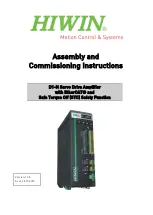
Operations Manual, HPA2, Compact Outdoor SSPA
208495 REV B
57
5.2 ZBUC Converter Theory of Operation
The ZBUC converter is a low gain block up converter with a P
1dB
of 0dBm. This topology
allows the system to be integrated with little impact on the general electrical specifications of
the SSPA module.
The ZBUC converter utilizes single up conversion from L-Band to the desired RF band. The
local oscillator circuits are designed to maintain the lowest possible output phase noise. The
frequency synthesizer utilizes industry leading technology which allows for phase noise
performance previously unattainable in PLL design. Typical phase noise specifications are
outlined in
Table 5-2
.
Band selectivity is accomplished using the most aggressive filtering possible while maintain-
ing specified power and spurious performance.
5.3 Smart Reference Technology
Teledyne Paradise Datacom’s new ZBUC converter comes standard with smart reference
technology. Smart reference technology allows the system operator to change external
system reference frequency without any system configuration required. The ZBUC converter
will automatically sense and lock to any one of the following system reference frequencies: 5,
10, 20, 25, and 50 MHz. With the internal reference option installed the ZBUC converter will
operate with no external reference applied. In the event the system operator wishes to
operate on external reference, the ZBUC converter will automatically sense the presence of
an external reference and switch to external reference mode. With the internal reference
option installed, the internal reference also becomes a backup reference which will become
active in the event that external system reference is lost.
External reference is applied to the ZBUC converter via the L-Band input IFL and is routed to
the frequency synthesizer using the built-in demux circuitry.
Table 5-2: ZBUC RF output phase noise specification
Offset
Guaranteed
Maximum
C-Band
(Typical)
X-Band
(Typical)
Units
10 Hz
-30
-60
-60
-50
dBc/Hz
100 Hz
-60
-80
-75
-65
dBc/Hz
1 KHz
-70
-80
-75
-72
dBc/Hz
10 KHz
-80
-85
-100
-90
dBc/Hz
100 KHz
-90
-120
-110
-110
dBc/Hz
1 MHz
-90
-125
-122
-120
dBc/Hz
Ku-Band
(Typical)
Ka-Band
(Typical)
-60
-72
-75
-88
-112
-122
















































